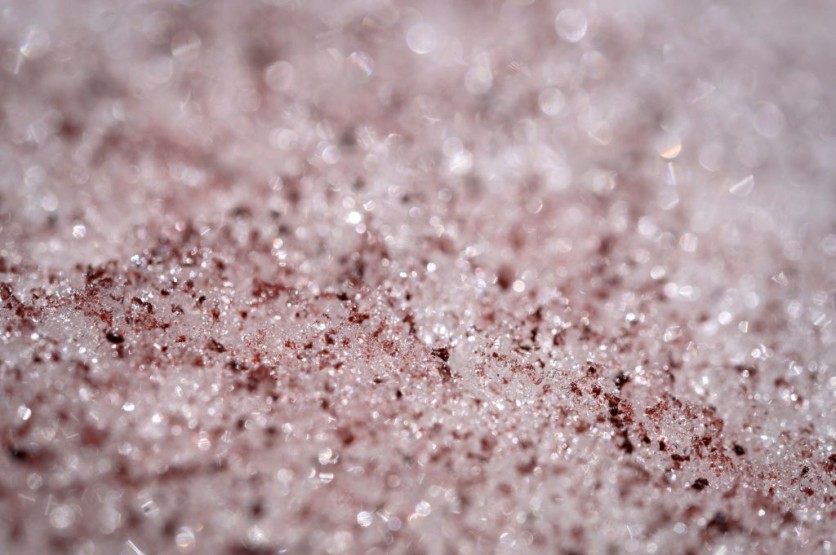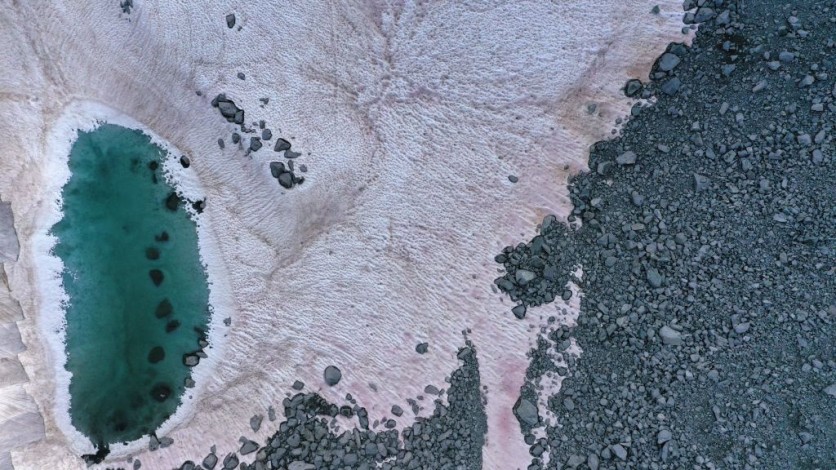A team of researchers was busy scanning the snow fields of Clements Mountain in Montana's Glacier National Park to find snow algae.
Then they saw a slight blush on the mushy snow ahead from about 100 yards, which instantly drew their attention.
Wired reports that this is caused by Chlamydomonas nivalis, a red-pigmented green alga common in the high alpine and arctic regions worldwide.

The algae's striking look on the snow has earned nicknames such as glacier blood and watermelon snow. These algae may significantly contribute to the melting of glaciers and snowfields, according to scientists.
When algae grow in snow, they absorb more heat melting the ice quickly. To understand the full extent of this phenomenon, the researchers traveled to the mountains of Oregon, Montana, Utah, Wyoming, and Washington. They took measurements and examined how reflective snow algal areas were.
Read also : One Billion Snow Crabs Disappear in Alaska; Scientists Point Out Climate Change and Overfishing
Measuring the Pink Snow
The researchers used a spectroradiometer, a little black tube hung above a patch of snow at the end of the pole.
The researchers used the instrument to measure the snow's albedo, which is a measurement of how much of the sun's rays are reflected upward. Red snow indicates a lower albedo, which results in more sunlight absorption and quicker snowmelt.
The amount of algae growth will then be determined by measuring the chlorophyll levels five to ten days later in a cold incubator under grow lights.

The two nutrients come from various sources. Wired notes that phosphorus was previously found in rocks that have been eroded by glaciers, whereas nitrogen is thrown in from agricultural areas' chemical fertilizers and manure.
Researchers believe both nutrients, especially nitrogen, activate algae bloom. They suspect that wind patterns make algal blooms more prevalent in the Intermountain Rockies, and they want to understand the mechanisms at play.
These efforts are part of the team's burgeoning field of snow algae study. The goal of the research is to determine what causes the growth of algae growth and where it usually flourishes.
Researchers from Western Washington University asked snowboarders, climbers, and hikers to participate in the Living Snow Project, a citizen science program, gathering pink snow samples.
Understanding the factors that affect snow algal growth is a crucial first step in comprehending a changing water source. Knowing where algae might hasten snowmelt is especially important for the Western US, which is prone to drought, according to Wired.
Related Article : NASA Snaps a Real-Life Van Gogh Painting From Space in the Baltic Sea

ⓒ 2025 TECHTIMES.com All rights reserved. Do not reproduce without permission.




